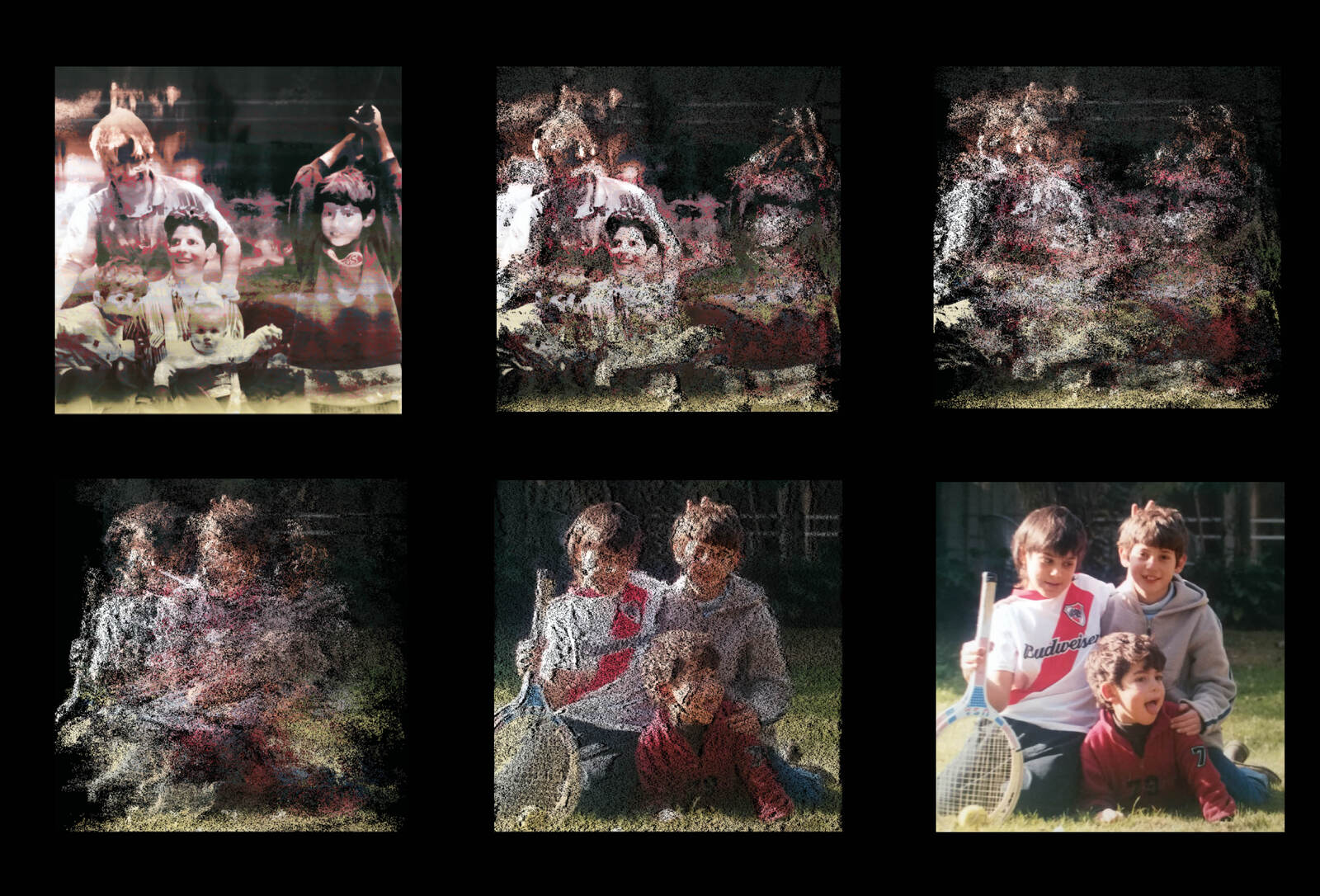
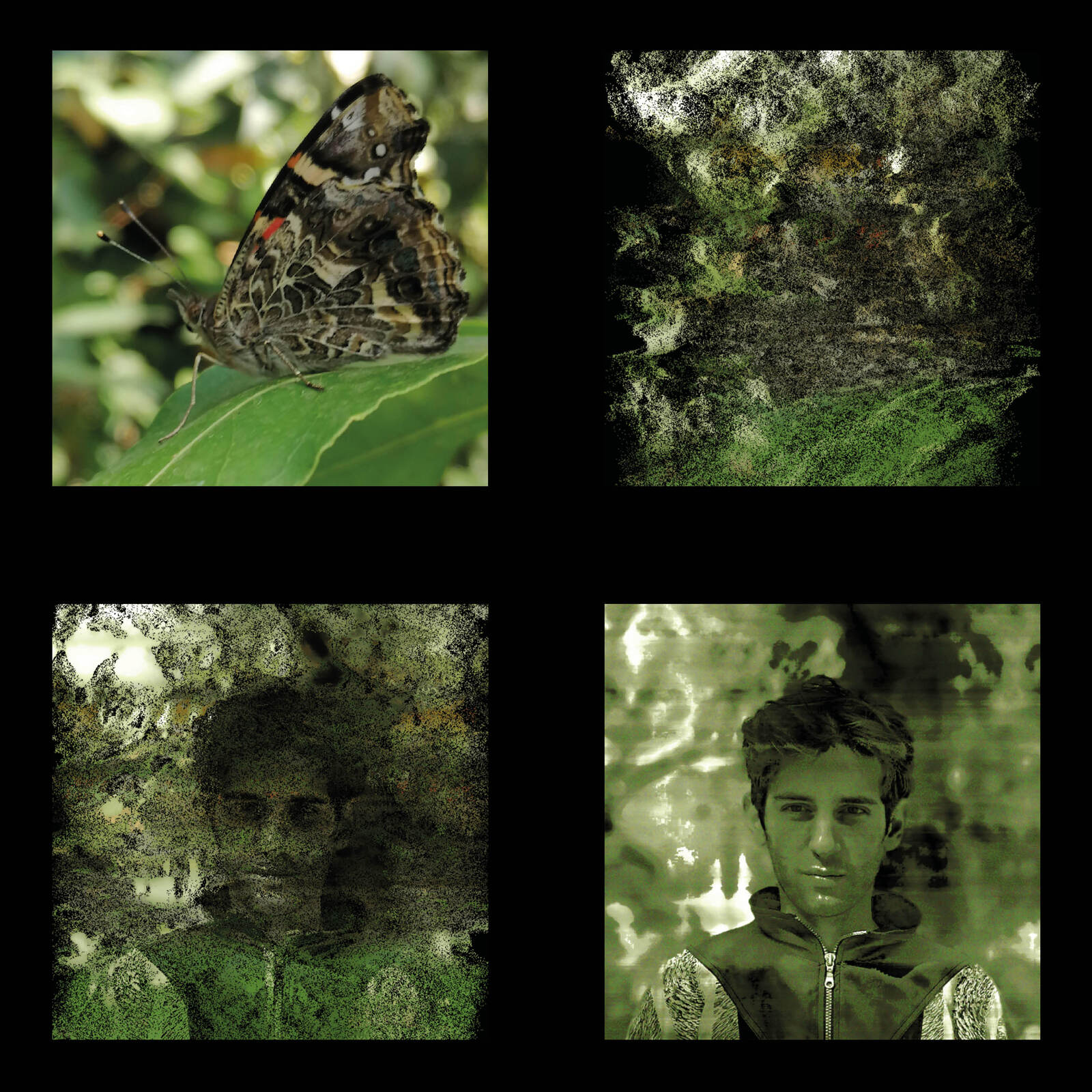
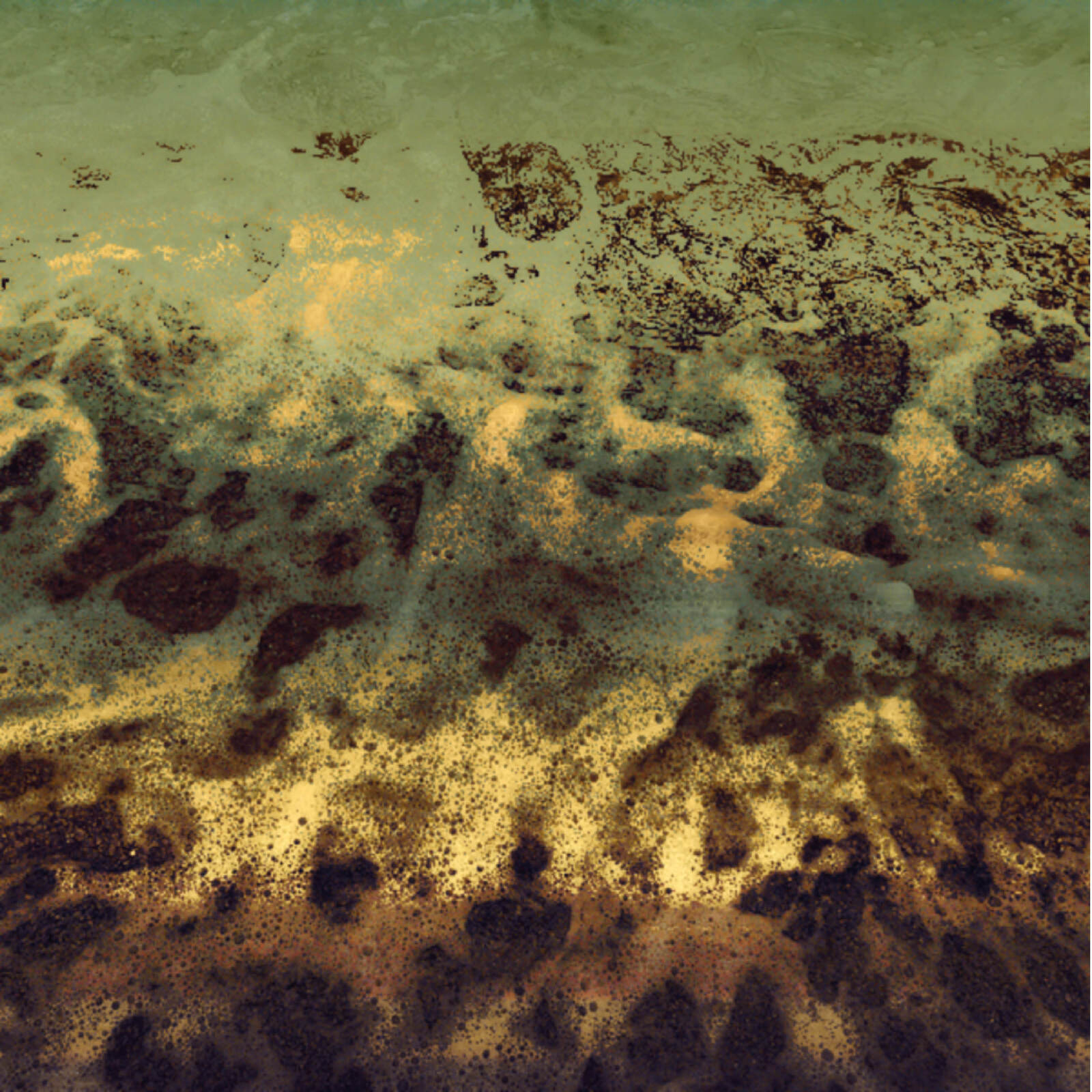
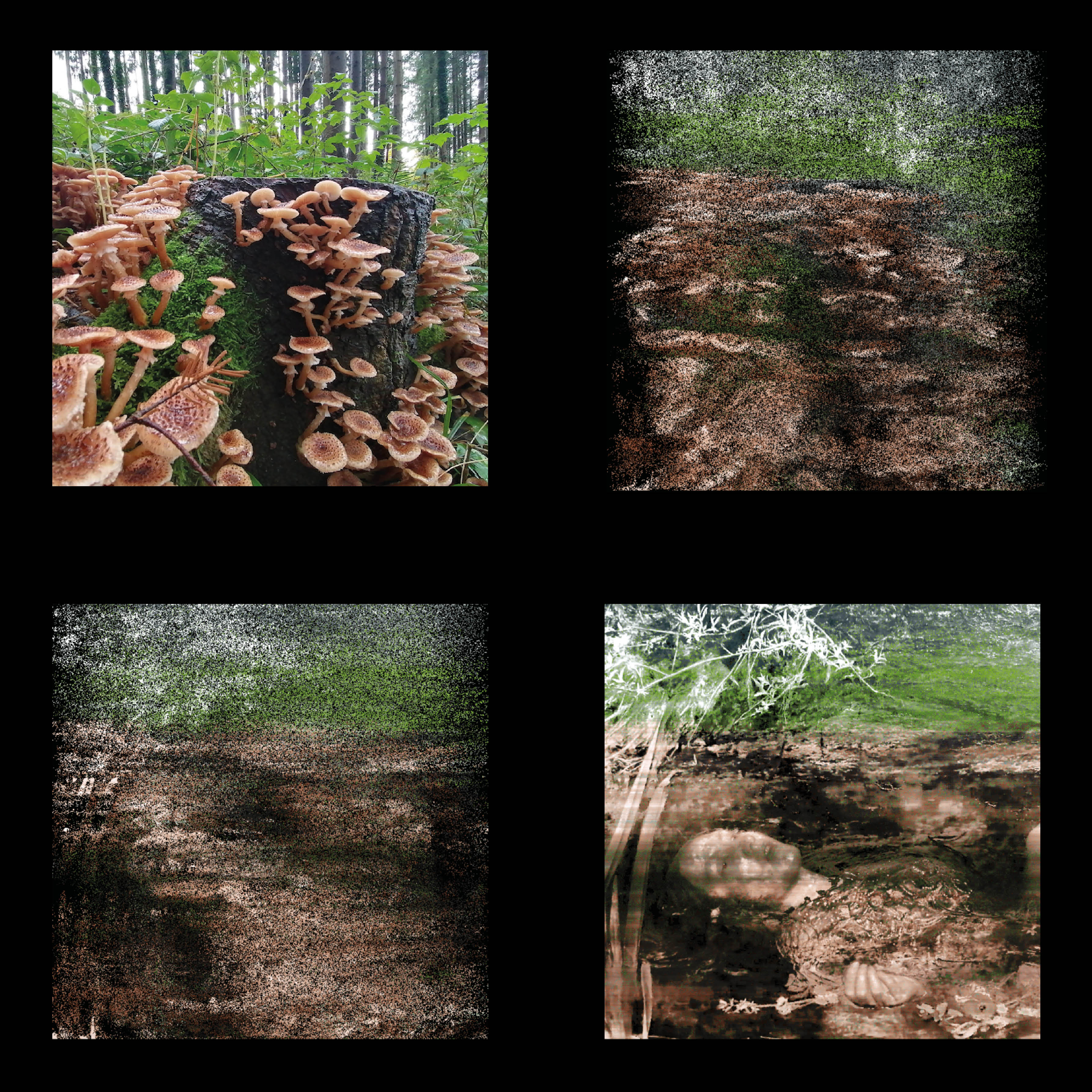
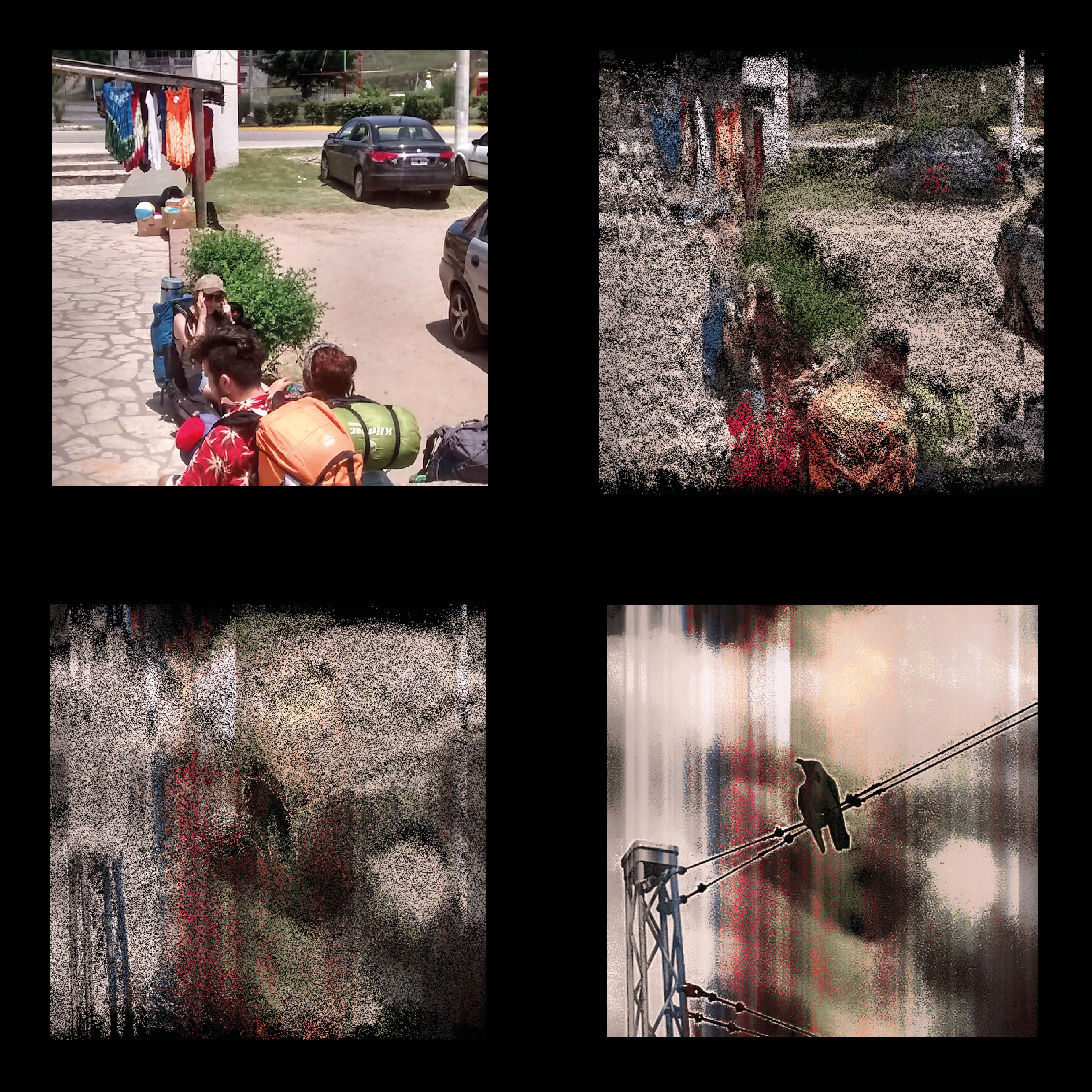
Self-tracking data may be the most massive and pervasive type of data, often in a format not usually recognized as such: photos. Digital photography allows us to keep a record of where we have been, what we have seen, and, most importantly, how we have felt. Photos achieve this because they are their own visualization — organic and full of detail — retaining impressions that we also hold in our memories. It is through the excessive richness of images that a direct and intimate connection to each of us is created.
When we speak of image data, we usually refer to the meta-information (time, location) and content that can be extracted from it (what can be objectively identified within the image), thus obscuring the organic nature that gives it its auratic quality. Paradoxically, it is only by considering the digital image as a technical object — a matrix of RGB values — that its material plasticity is brought back to our awareness, and its auratic quality is retrieved.
Mosaic Memory Drive is a puzzle of self-tracked memories. It reproduces an image by using the pieces of another in an endless loop of re- and de-construction. It is a series of anagrams — or anagraphs: permutations of pixels — where an "original" data is present only as the rearranging tiles that lend themselves to another, challenging assumptions about the information actually stored in our data and ourselves.
For this process to be accurately displayed, it needs to be run in real-time, as video encryption dissolves the images' materiality to make files lighter and their progressive decryption faster. Mosaic Memory Drive is thus a process of encryption and decryption itself. The technique can also be used to encode space-filling and pixel-based visualizations into images, supporting the creation of novel data-driven narratives.
Contributors
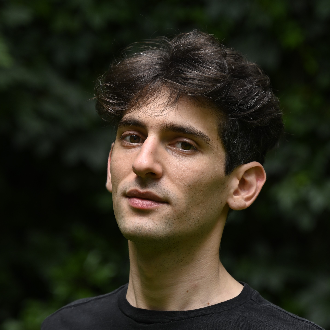
|
Baltazar Pérez Baltazar Pérez (Santiago de Chile, 1994) is a recurrent VISAP artist, designing and studying visualizations in academia and out for nearly a decade while investigating visualization as a form of art. Currently in his final PhD year at TU Wien, where he explores mixed-initiative visual analytics. |